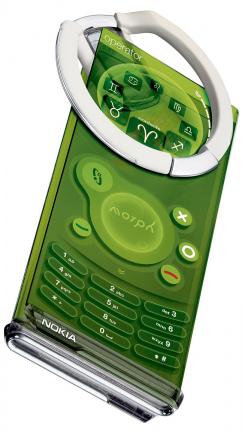Cambridge scientists invent ‘bendy’ phone
Cambridge scientists have unveiled a blueprint for a new generation of flexible mobile phones. ‘Morph’, a concept designed in a partnership between the University and the Nokia Research Centre in Cambridge (NRC), promises to allow users to bend and stretch their waterproof phones into completely different shapes for ease of use and transport.
The breakthrough in nanotechnology, launched as part of the Design and the Elastic Mind exhibition at the Museum of Modern Art in New York, is the product of a long-term collaboration between the Department of Engineering’s Nanoscience Group and the NRC Cambridge laboratory, which was announced in March 2007.
 Professor Mark Welland, Head of the Group, highlighted the importance of this technology in light of current research in nanotechnology. “All of the elements of the phone are reflected in real projects that are going on here”, he commented, highlighting both the development of flexible electronics and the engineering of materials to “sense” their surroundings.
Professor Mark Welland, Head of the Group, highlighted the importance of this technology in light of current research in nanotechnology. “All of the elements of the phone are reflected in real projects that are going on here”, he commented, highlighting both the development of flexible electronics and the engineering of materials to “sense” their surroundings.
Dr Tapani Ryhanen, Head of the NRC, in turn underlined the scientific relevance of these developments, claiming that the Morph represented more than merely a piece of “aspirational design”. “We hope that this combination of art and science will showcase the potential of nanoscience to a wider audience”, he said. “The techniques we are developing might one day mean new possibilities in terms of the design and function of mobile devices”.
Robert Craig
 Features / Cold-water cult: the year-round swimmers of Cambridge21 June 2025
Features / Cold-water cult: the year-round swimmers of Cambridge21 June 2025 Comment / Good riddance to exam rankings20 June 2025
Comment / Good riddance to exam rankings20 June 2025 Theatre / Do Cambridge audiences actually get theatre? 22 June 2025
Theatre / Do Cambridge audiences actually get theatre? 22 June 2025 News / Magdalene evicts pro-Palestine encampment24 June 2025
News / Magdalene evicts pro-Palestine encampment24 June 2025 Lifestyle / What’s worth doing in Cambridge? 19 June 2025
Lifestyle / What’s worth doing in Cambridge? 19 June 2025




